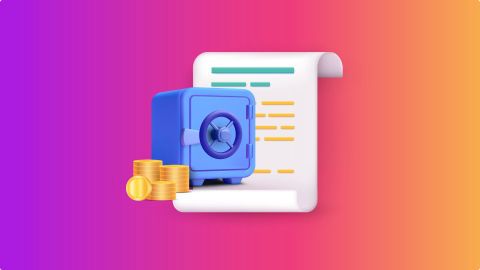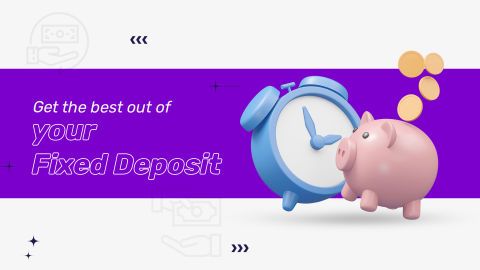Just left your job or planning a switch?
Here’s what happens to your EPF when you resign:
1. 2-month waiting period (mostly)
You can apply for full EPF withdrawal after 2 months of unemployment—unless you're retiring, moving abroad, or facing specific medical/emergency conditions.
Planning a job break? Use this window to rethink your finances.
2. No waiting if you join a new job with EPF
If you switch to a new employer who offers EPF, your balance must be transferred, not withdrawn.
It’s not just safer—it keeps your savings compounding.
3. Tax implications still apply
Withdrawing PF before 5 years of service may attract TDS and income tax, unless exemptions apply.
Pro tip: Avoid tax outgo by transferring instead of withdrawing early.
4. UAN & KYC must be updated
Your Universal Account Number (UAN) must be active and KYC-complete for seamless withdrawal.
A small update now saves big delays later.
Taking a career pause?
Instead of parking your PF money in a savings account, consider a smarter move.
- Invest in a Bajaj Finance Fixed Deposit and grow your funds steadily while you plan your next steps.
- Open FD Account in just a few minutes with your mobile number.
Process to enter exit date for PF withdrawal
Did you know? Now, employees can directly update their exit date for PF withdrawal via the EPFO Unified Member Portal! This new feature streamlines the process and eliminates the need for employer involvement.
Here's how you can easily enter your exit date:
- Log in to the UAN portal: Use your Unified Account Number (UAN) and password to access your account.
- Go to the 'Manage' tab: Select the 'Mark Exit' option from the dropdown menu.
- Choose your employer: From the list, select the relevant employer.
- Enter key details: Provide your date of birth, joining date, and exit date. Ensure the exit date matches the one mentioned in your resignation or departure letter.
- Verify the exit date: Head to the 'Service History' section under the 'View' tab to confirm your details.
Pro tip: If you're unsure about your exit date, double-check your resignation letter to ensure smooth withdrawal processing!
How to check PF withdrawal status?
Wondering where your PF withdrawal stands? Here’s how you can track the status of your claim in just a few simple steps:
- Log in to the UAN portal using your credentials
- Go to ‘Online Services’ > ‘Track Claim Status’
- Enter your reference number (you’ll get this when you apply)
- View your real-time claim status instantly
If need to see your claim status on the go, you can use the EPFO's mobile app for easy access!
Which forms are used for EPF withdrawal?
Here's a breakdown of the most commonly used forms:
EPF Form 31
Used for advance withdrawals or withdrawals for specific purposes. Think of it as the 'Advance Form'.
EPF Form 19
Need a final settlement or pension benefits? Form 19 helps you claim them! No UAN? You can still submit this form using just your PF account number.
Form 10C
Looking to withdraw your pension amount? Use Form 10C if you’ve switched jobs after 6 months of service but before completing 10 years of service.
Quick Tip: Keep track of your service duration to ensure you use the correct form for a smooth withdrawal process.
How to apply for a Home Loan Based on EPF accumulation
Looking to buy a home using your EPF balance? Here’s how you can use your EPF accumulation to get a home loan:
You can apply for a home loan up to 36 months of your EPF contributions. The process is simple if you've completed 5 years of continuous service.
Steps to apply via the UAN Member Portal:
- Log in to the UAN portal: Access it via UAN Member e-Sewa.
- Navigate to ‘Online Services’: Select ‘Claim (Form-31, 19 & 10C)’.
- Enter your details: Add your registered bank account number and verify it.
- Proceed with the online claim: Select the ‘PF Advance (Form 31)’ option and input the loan amount.
- Upload required documents: Complete the form and submit your application.
- Approval & disbursement: Once approved, the loan amount is sent directly to the housing society.
Bonus Tip: Need a safe and predictable investment? Consider opening a Fixed Deposit while you plan for your new home! Open FD Account with Bajaj Finance now and get interest of up to 8.60% p.a.
PF Customer Care Numbers
Got questions about your PF account? Here’s where to reach out:
- Toll-free PF number: Call 14470 for any assistance
- Missed call for EPF details: Dial 9966044425 to get EPF information
- Check PF balance via SMS: Send “EPFOHO UAN” to 7738299899
- PF-related email support: For more info, email employeefeedback@epfindia.gov.in
For urgent issues, use the toll-free number for instant help!
Calculate your expected investment returns with the help of our investment calculators





